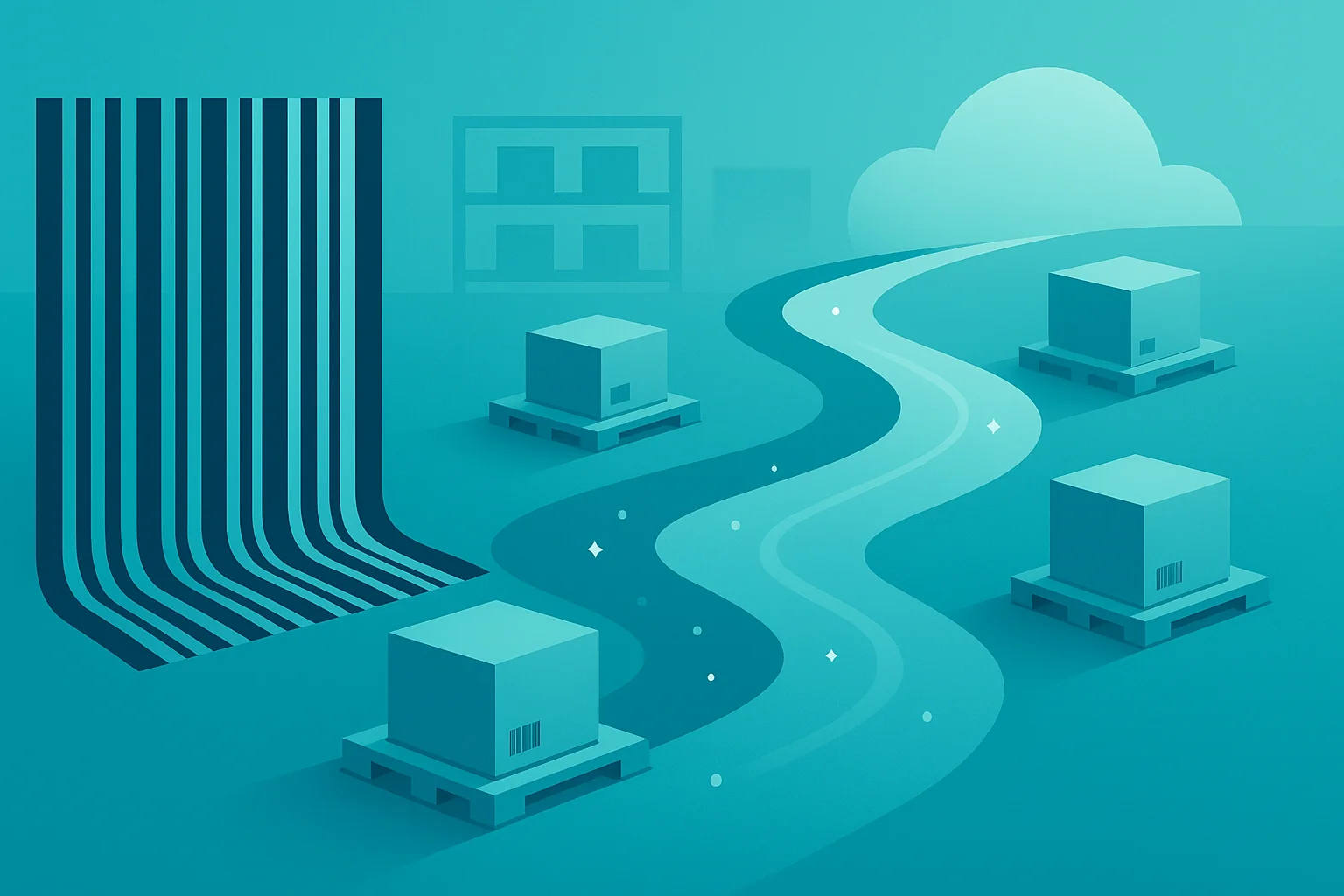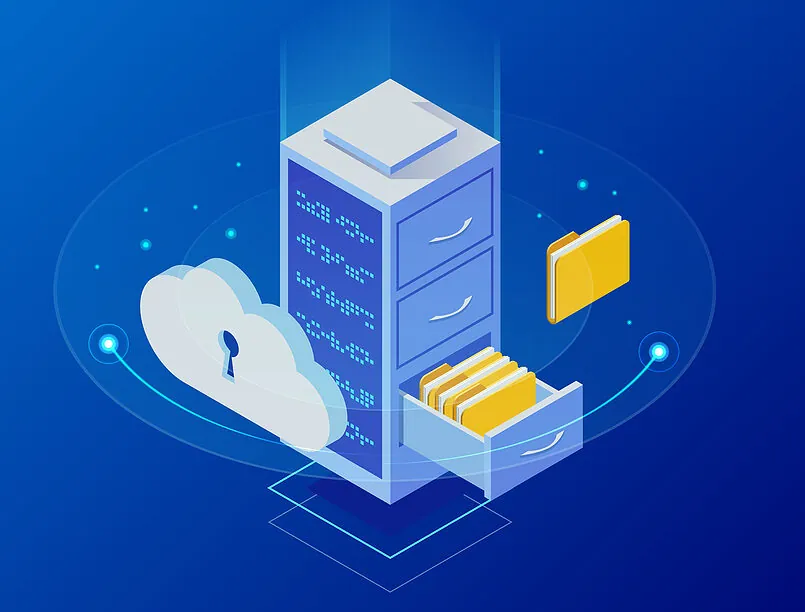
AI Readiness For Supply Chains Starts With Mobile Barcoding
This is part IV of the Smarter Supply Chain Series
Part I: Why Supply Chains Need Clean, Real-Time Edge Data for AI Accuracy
Part II: AI Adoption in Supply Chains: From Agents to Mobile Execution
Part III: Data Integrity in the Supply Chain: The Hidden Factor Behind AI Accuracy
Everyone’s talking about AI in supply chains, but the real question is: are your operations ready for it? Readiness is about whether your frontline and back-office teams can feed AI the clean, trustworthy inputs it needs to actually deliver results.
In practice, readiness looks like data flowing smoothly from the warehouse floor to your ERP, workflows digitized end to end, and information structured so it can be analyzed and acted on. Without those fundamentals, even the most promising AI tools stall out. With them, every scan, transaction, and confirmation becomes fuel for smarter planning, faster execution, and decisions you can rely on.
Defining AI Readiness For Supply Chains
When people talk about “AI readiness,” it can feel abstract, like a checklist with no real-world anchor. In supply chains, readiness is much more practical. It begins with data that is structured, real time, and integrated across systems. It requires transactions captured at the point of activity, consistent identifiers across items and locations, and clear event timestamps that reflect what actually happened on the floor. Without these fundamentals, AI pilots struggle to scale and the impact stalls because the models are only as reliable as the data they ingest.
AI Starts With Smart Data Inputs
AI creates value only when the facts it consumes are precise, complete, and timely. That foundation is built at the edge, where mobile barcoding turns physical moves into digital events with consistent meaning across systems. Each scan should capture who, what, where, and when, using common identifiers so records stay portable across ERP, WMS, MES, and planning tools. For a deeper primer on why this matters, see RFgen’s overview of clean, real-time edge capture and how it supports AI initiatives.
Quality improves when validation happens at the point of work. Confirming items and locations, enforcing units of measure, and applying reason codes keeps errors from spreading, which lifts master data fidelity and transaction accuracy. Resilient workflows that queue activity during brief outages maintain continuity, then reconcile without disrupting users or downstream systems.
Integration should be predictable and vendor neutral. Publish an event once with a stable contract, let subscribed systems consume it in the formats they expect, and standardize timestamps so order and traceability hold up everywhere. When inputs are trustworthy and timely, automation becomes dependable and predictive insights become actionable, regardless of which ERP is in place.
Research from Kearney frames the upside of AI in supply chain operations within a broader analytics maturity journey, which complements the readiness approach discussed here. When inputs are trustworthy and timely, automation becomes dependable. Pick paths can be sequenced by real availability, replenishment can trigger on true bin levels, and planning can model constraints on clean lead times and yields. Models learn from signal rather than noise because labels, locations, and times mean the same thing everywhere.
Design Patterns To Make Inputs AI Ready Across Any Stack
Getting AI-ready data comes down to a handful of repeatable patterns. By treating every scan as an opportunity to create data your AI can trust, you build confidence step by step. Start with the workflows your teams touch most, like receiving, picking, and work in process, then apply the same rules across sites. Each pattern is ERP neutral and puts frontline users first so your analytics see complete, time-aligned events instead of noise.
- Standardize the event schema with mandatory fields and ISO 8601 timestamps
- Validate at the edge using cached master data with graceful offline queues
- Generate idempotent events with unique IDs for safe retries and deduplication
- Separate capture from posting with connectors that translate into each system’s transaction type
- Monitor quality using data SLAs such as transaction latency, exception rate, and inventory accuracy
Let’s explore a realistic scenario. A receiver scans an SSCC on a pallet and two case labels. The device validates item and lot, assigns a license plate number, and records temperature and damage codes. Three events are created in one payload and posted once to the integration layer. The ERP posts a goods receipt, the WMS creates putaway tasks, and the planning system updates on hand with the same event ID and timestamp. Minutes later, a cycle count confirms location and quantity, reinforcing model confidence that on hand and availability are real.
Make every scan produce a complete, consistent, and time aligned event. Do that, and any ERP you run becomes a reliable source for automation and analytics rather than a bottleneck.
Modernization Pathways Across ERP Ecosystems
Most organizations don’t have the luxury of starting fresh with their systems. Supply chains often run on a mix of on-premise and cloud platforms, and that’s okay. RFgen supports these realities by letting teams add digital workflows without a rip-and-replace, then scale by process area as value is proven. Organizations can extend with platform-native low-code options or RFgen’s prebuilt apps to move quickly without adding complexity.
RFgen helps organizations turn physical workflows into digital ones so every scan, move, and confirmation becomes a reliable system event. For example, with RFgen Mobile Barcoding for Oracle SCM, frontline tasks are validated in real time, which reduces keystroke errors and closes the gap between what people intend to do and what the system records. The platform integrates with Oracle ERP and SCM so data captured on handhelds and tablets lands in the system of record as structured transactions, which creates the consistent foundation that AI tools need. For a deeper look at how RFgen aligns with Oracle Cloud use cases, see mobile inventory designed for Oracle Cloud for examples of common workflows and integration patterns.
Where AI Fits Once The Foundation Is In Place
Once your data is clean and flowing reliably, that’s when AI stops being a buzzword and starts proving its value. With trustworthy inputs, AI can prioritize exceptions, forecast constraints, and recommend actions that balance cost, service, and capacity. Intelligent agents become useful when they can trust the inputs coming from mobile transactions and edge devices.
Those same inputs enable predictive maintenance, dynamic slotting, risk-based purchasing, and labor planning that responds to real conditions. For market context on evolving priorities, this SCMR overview of 2025 supply chain priorities highlights themes like circularity and supplier diversification that benefit from accurate operational signals and integrated data.
What “Readiness” Looks Like In Practice
AI readiness is something you can see and measure in daily operations. These markers act as early signals of value creation, showing where your supply chain is becoming more precise and dependable. Track simple KPIs like percent of transactions captured on mobile, median post-to-ERP latency, exception closure rate, schema conformance, and user adoption. As these markers improve, your signal-to-noise rises and AI outputs become reliably actionable.
- Frontline-first digitization. Start with high-volume, error-prone transactions such as receiving, putaway, picking, production issues, and cycle counts. Every accurate scan reduces downstream rework and makes planning signals more precise.
- Unified identifiers and timestamps. Align item, lot, serial, and location standards so events mean the same thing in every system, then ensure every event carries a trusted time marker for sequencing and traceability.
- Closed-loop integrations. Use connectors and APIs so handheld transactions post to ERP in real time and exceptions push back to the floor with clear instructions, which tightens the loop between planning and execution.
- Analytics-ready structures. Store events in consistent, queryable formats. When the same structure describes events across sites and systems, AI models learn faster and predictions hold up across scenarios.
- Governance and change management. Document workflows, train users, and track adoption. Readiness is as much about people and process as it is about technology.
How To Get Started with Frontline Digitization
Big transformations often start with one small, intentional step. For AI readiness, that step is digitizing the frontline.
- Pick one high-impact workflow. Receiving, picking, or work-in-process moves are strong first targets because they influence inventory accuracy and order performance.
- Instrument the process with mobile barcoding. Validate data at the point of work so each scan posts a clean, timestamped event that reflects reality.
- Integrate in both directions. Post transactions to ERP immediately and return clear, actionable prompts to the handhelds, which keeps people and systems in sync.
- Measure and expand. Track accuracy, throughput, and exception rates, then scale to adjacent workflows and sites as the value becomes obvious.
- Layer analytics and AI. Once event streams are clean, add forecasting, optimization, and eventually agents that propose and execute actions with confidence.
AI readiness is an ongoing operating posture where every frontline task creates data that is fit for analytics and automation. By digitizing the edge, integrating systems, and standardizing events, you give AI the inputs it needs to deliver on the promise. RFgen provides a practical bridge from today’s operations to that future state so your next AI initiative starts with data you already trust.
Learn, See, & Plan At Oracle AI World
If Oracle is part of your landscape, the program at Oracle AI World includes sessions that reinforce the readiness journey. Topics such as AI agents for Fusion SCM, hands-on labs for finance and supply chain data intelligence, and APEX-based approaches to extend SaaS all assume clean operational inputs and integrated systems. To meet RFgen’s Oracle mobility experts, schedule one-on-one time at the show via our Oracle AI World 2025 event page.







